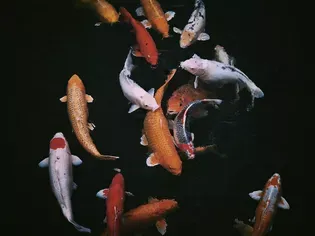How to Treat Koi Herpesvirus
Updated on 04/26/24

How to Treat Koi Herpesvirus: A Comprehensive Guide to Saving Your Beloved Fish
Koi herpesvirus (KHV), also known as cyprinid herpesvirus 3, is a highly contagious and deadly disease that affects koi and other carp species. This virus can cause significant fish loss and devastate koi populations worldwide. However, with early detection, proper treatment, and preventive measures, you can significantly increase your chances of saving your koi from KHV.
Understanding Koi Herpesvirus
KHV is a double-stranded DNA virus that infects the skin, gills, and internal organs of koi. It is spread through direct contact with infected fish or water contaminated with the virus. Symptoms of KHV can vary depending on the strain of the virus and the health of the fish, but they typically include:
* Skin lesions and ulcers
* Gill inflammation and swelling
* Lethargic behavior
* Decreased appetite
* Respiratory distress
* Death
Treating Koi Herpesvirus
There is no cure for KHV, but early detection and treatment can help to reduce mortality rates. Treatment options for KHV include:
1. Antiviral Medications:
Antiviral medications, such as acyclovir and valacyclovir, can help to suppress the virus and reduce the severity of symptoms. These medications should be administered as soon as possible after symptoms are observed.
Example: A study conducted by the University of California, Davis showed that acyclovir treatment significantly reduced mortality rates in koi infected with KHV.
2. Supportive Care:
Supportive care can help to improve the overall health and well-being of koi infected with KHV. This includes:
* Providing clean, well-aerated water
* Maintaining optimal water temperature
* Offering a nutritious diet
* Isolating infected fish to prevent further spread
3. Vaccination:
Vaccines are available for KHV, and they can help to protect koi from infection. Vaccination is recommended for all koi in areas where KHV is known to occur.
Example: A study by the Japanese National Fisheries Research Institute showed that vaccinated koi had a significantly lower risk of developing KHV than unvaccinated koi.
4. Quarantine and Disinfection:
Quarantine and disinfection are essential for preventing the spread of KHV. Infected fish should be isolated from healthy fish, and all equipment and surfaces that have come into contact with infected fish should be thoroughly disinfected.
Example: A koi farm in the United Kingdom successfully contained an outbreak of KHV by implementing strict quarantine and disinfection protocols.
Preventing Koi Herpesvirus
Prevention is key to reducing the risk of KHV infection in koi. Here are some preventive measures you can take:
* Purchase koi from reputable sources
* Quarantine new koi for at least 30 days before introducing them to your pond
* Avoid contact with wild carp or other fish that may be infected with KHV
* Maintain good water quality
* Vaccinate your koi against KHV
Conclusion
Koi herpesvirus is a serious disease, but it can be managed with early detection, proper treatment, and preventive measures. By following the guidelines outlined in this article, you can increase your chances of saving your koi from this deadly virus and protecting your entire koi population. Remember, early intervention is crucial, and consulting with a qualified veterinarian is always recommended if your koi exhibit any suspicious symptoms.
Explore More Pets

Freshwater Aquarium Filters
How to Deal With Cloudy Aquarium Water

Saltwater Aquarium Filters
How Do You Remove Chloramines From Tap Water?

Freshwater Aquariums & Habitat
Can I Keep My Koi Fish Inside?

Saltwater Aquariums & Habitat
14 Best Floating Plants for Your Aquarium

Freshwater Fish Health
How to Treat Ich on Freshwater Fish

Saltwater Fish Health
Fin Rot in Aquarium Fish

Freshwater Aquarium Filters
How to Do Aquarium Water Changes

Saltwater Fish Health
How Do Fish Get Parasites?